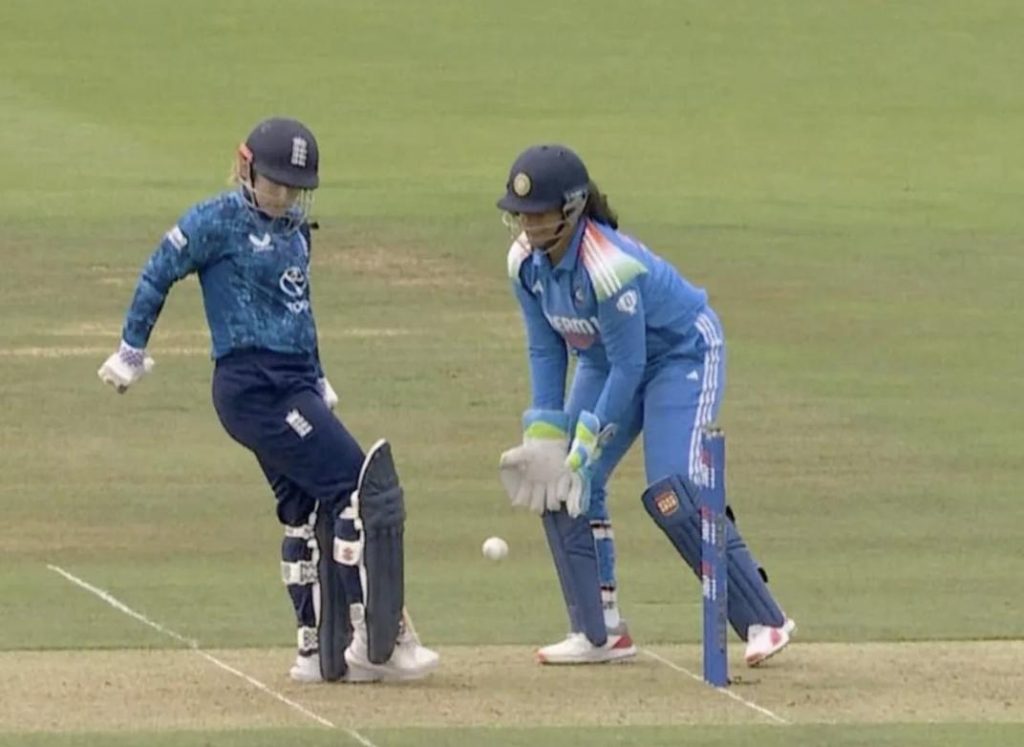
Why was India’s obstructing the field appeal against England’s Beaumont rejected?
The ongoing Women’s One-Day International (WODI) series between England and India has witnessed some thrilling matches, with the second ODI at Lord’s being no exception. The match saw a heated controversy erupt when India’s Jemimah Rodrigues threw the ball to wicketkeeper Richa Ghosh, only to be rejected by the TV umpire after appealing for “obstruction of the field” against England’s Tammy Beaumont. In this blog post, we will delve into the details of the incident and explore why India’s appeal was ultimately rejected.
The Incident
The controversy unfolded in the fifth over of England’s innings, when Beaumont was attempting to take a single off Rodrigues’ bowling. As she turned to face the dot ball, she was caught off guard by Rodrigues’ quick throw to the wicketkeeper. Ghosh, anticipating a chance to dismiss Beaumont, rushed towards the ball and appealed loudly, suspecting that Beaumont intentionally blocked the throw with her foot.
The on-field umpire, however, did not give the decision out, instead opting to refer the incident to the TV umpire for a review. After careful examination, the TV umpire ruled that the contact was unintentional, as Beaumont was attempting to regain her ground. The decision was met with a mix of reactions, with some Cricket enthusiasts questioning the TV umpire’s call.
Why was the appeal rejected?
So, what led the TV umpire to reject India’s appeal? There are several factors that contributed to the decision. Firstly, the TV umpire took into account the angle of the throw and the distance between Beaumont and the wicketkeeper. Rodrigues’ throw was a quick one, and Ghosh had to cover a significant distance to reach the ball. In such situations, it is not uncommon for the fielder to accidentally block the ball with their foot.
Secondly, the TV umpire considered Beaumont’s movement and body language during the incident. Beaumont was seen attempting to regain her ground, which suggests that she was not intentionally blocking the throw. The TV umpire took into account the context of the game and the fact that Beaumont was not trying to gain an unfair advantage by blocking the ball.
Lastly, the TV umpire looked at the available evidence and the footage of the incident. While the footage did show Beaumont’s foot making contact with the ball, it also showed that she was attempting to change direction and regain her ground. The TV umpire concluded that the contact was unintentional and not deliberate, which is a crucial aspect of the “obstruction of the field” rule.
What does the rule say?
Under the Laws of Cricket, “obstruction of the field” is defined as an act that “unfairly hinders or distrains the batsman or wicket-keeper” (Law 37.1). The rule states that if a fielder intentionally blocks the ball with their body or hand, it shall be considered an obstruction and the batsman shall be given out.
However, if the fielder’s action is deemed unintentional, the batsman shall not be given out. The TV umpire’s decision was based on the evidence available, which suggested that Beaumont’s action was unintentional and not deliberate.
Conclusion
The controversy surrounding Tammy Beaumont’s dismissal has sparked a heated debate among Cricket enthusiasts, with many questioning the TV umpire’s decision. While opinions may vary, the evidence suggests that the TV umpire’s call was correct. The incident highlights the importance of fair play and sportsmanship in Cricket, and the need for players to respect the rules of the game.
In the end, the rejection of India’s appeal was the correct decision, as it ensured that the game was played in the spirit of Cricket. The incident serves as a reminder that, even in the heat of competition, players must adhere to the rules and respect their opponents.
Source:






